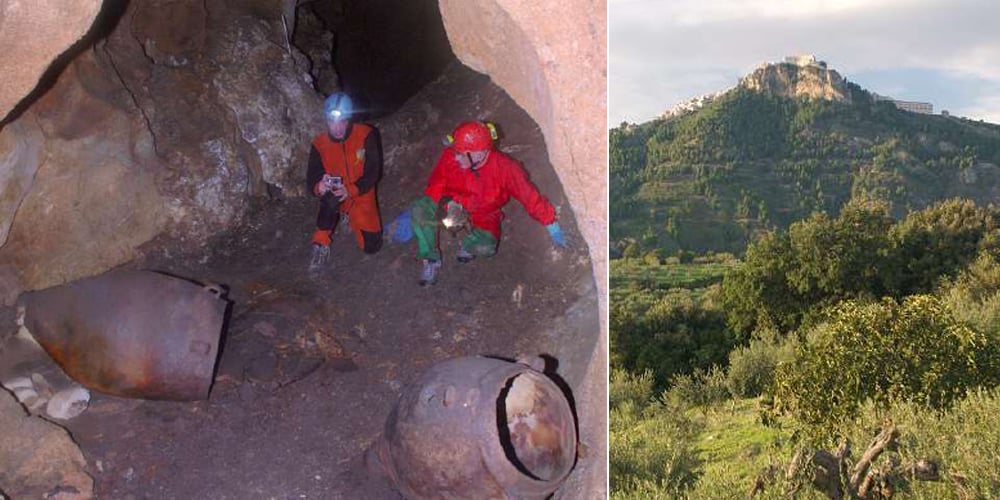(EurekAlert!) Ancient pottery tests positive for wine. Italian wine residue has been found from the Copper Age, debunking current belief wine growing and wine production in Italy developed during the Middle Bronze Age.
Chemical analysis conducted on ancient pottery could dramatically predate the commencement of winemaking in Italy. A large storage jar from the Copper Age (early 4th millennium BC) tests positive for wine.
This finding published in Microchemical Journal is significant as it’s the earliest discovery of wine residue in the entire prehistory of the Italian peninsula. Traditionally, it’s been believed wine growing and wine production developed in Italy in the Middle Bronze Age (1300-1100 B.C.) as attested just by the retrieval of seeds, providing a new perspective on the economy of that ancient society.
Lead author Davide Tanasi, PhD, University of South Florida in Tampa conducted chemical analysis of residue on unglazed pottery found at the Copper Age site of Monte Kronio in Agrigento, located off the southwest coast of Sicily. He and his team determined the residue contains tartaric acid and its sodium salt, which occur naturally in grapes and in the winemaking process.
It’s very rare to determine the composition of such residue as it requires the ancient pottery to be excavated intact. The study’s authors are now trying to determine whether the wine was red or white.
Materials provided by University of South Florida (USF Health).
1H-1H NMR 2D-TOCSY, ATR FT-IR and SEM-EDX for the identification of organic residues on Sicilian prehistoric pottery
Insights into the diets of early societies can be gained, indirectly, from the cultural evidence of artefacts related to food procurement, preparation and consumption and human skeletal remains. However, more direct evidence for dietary constituents derives from the identification of intact plant and animal remains collected during the excavations but also from the exam of the amorphous remains of foodstuff associated with artefacts. Organic residues adhering to the surface or absorbed into the porous fabric of an unglazed cooking vessel should provide important information both about the usage of the vessel and dietary practices. This contribute deals with the results of a combined analytical research via 1H-1H NMR 2D-TOCSY, ATR FT-IR and SEM-EDX on organic residues on pottery from two Sicilian prehistoric sites of Monte Kronio and Sant’Ippolito. The goal was that to shed new light on the use of certain ceramic shapes and infer some hypothesis about ancient dietary habits.




